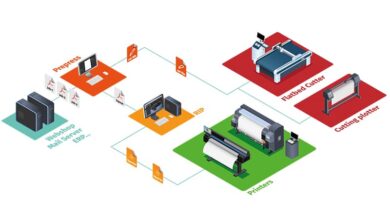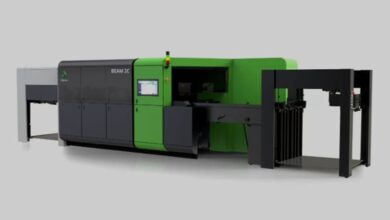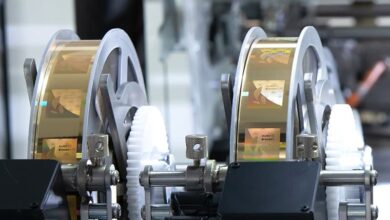
What can packaging hope to achieve in the fight against organised crime? The answer is: more than you might think, according to Andrew Masterson, Detective Inspector at PIPCU.
Situated in the Square Mile in the heart of London, the City of London Police is a relatively little-known local force – separate from the Met – quietly leading the charge against organised crime and counterfeiting across the whole UK. That’s because it is home to the Police Intellectual Property Crime Unit (PIPCU), the national police department dedicated to ending illicit trade for good.
Counterfeit products today are more rife than ever. As Andrew Masterson, Detective Inspector at PIPCU explains from the stage at Packaging Innovations, this can have a significant impact on the whole UK economy. “Counterfeiting is a global issue, recently identified as being worth $4.2 trillion – second only to the drug trade. In the UK, it has an economic impact of around £9 billion, costing around 80,000 jobs a year through illicit trade.”
A counterfeit jacket or handbag may seem innocuous on its own, but these fake items are often produced or distributed by gangs that have direct links to organised crime. “Criminals who sell counterfeit goods don’t stick to that lane,” Masterson explains. “As we investigate fake products, we’ll also find modern-day slavery, money laundering, drug trafficking, and health and safety offences. Products like perfumes, in particular, can be produced and stored in nasty environments.”
“Once these are on the street, they can look just like legitimate products, so it’s a matter of public safety for us to follow the finances and break the chains of these fakes.”
Part of PIPCU’s role is to protect the public from the impact of these criminals while also educating businesses on how they can help.
Counterfeiting is big business
“For me, the key is to defund these criminals,” Masterson explains. “The value of confiscated forfeiture sits at around £400,000 this year. That’s £400,000 in assets that we’ve taken out of the pockets of criminals. We’ve also seen around £6 million in counterfeit goods seized from the streets, so they can’t be sold to unsuspecting members of the public.
“However, we aren’t a silver bullet to this global problem. That’s why our mission is to educate the public and build a network with businesses, so that by combating this together, we can solve the problem together. It won’t be solved by the police turning up and arresting people – that’s a very outdated view of this complex area.”
Masterson explains that there are many direct and indirect victims of the counterfeit trade – in many cases, these victims are slaves forcefully detained in appalling conditions and made to manufacture cheap fakes. There is an obvious moral case for brands to do what they can to combat this but, as Masterson argues, the business case is just as obvious.
“The damage to the industry isn’t just the loss of sales, it’s the loss of brand protection and faith in the industry. If a consumer buys a fake product that then breaks, they’re not necessarily going to realise they bought a cheap counterfeit. They’re going to blame the brand. We’ve seen businesses suffer and even fold as a result of this reputational damage.”
And, just as the legitimate packaging industry is evolving and innovating faster than ever, so too is the counterfeiting industry. “Packaging can be used by criminals to circumvent legitimate processes, like customs checks. Companies are very good at informing the Border Force about how to protect their products. But we saw a case last year where counterfeit boxes were used to bring fake Apple products into the country.
“We went into a shop where we had learned counterfeit products were being sold, but when we checked the shop, we couldn’t find them. The fake stock wasn’t on view. On further investigation, we found that they were using custom counterfeit boxes that had been made a millimetre bigger than the genuine packaging, so they could fit the fake Apple products inside.
“When these packs went through Border Force, they looked like unbranded third-party products. The criminals could then unbox the products and sell the fakes as if they were genuine for 10-20% less than the market value of the genuine Apple product. They’re making money on the products, and on the packaging – it’s a business for them.”
The packaging solution
When those criminals were investigated, it emerged that they had set up a brand-new packaging company that made both illegitimate and legitimate packaging, something Masterson warns is common. “These criminals are smart,” he explains. “We engage as much as we can with third parties who can identify these ‘semi-legitimate’ businesses, but there is no easy way to spot them.
“That’s why the legitimate packaging industry has such an important role to play through labelling, identification, QR codes, digitalisation, and so on. All the things that people here [at Packaging Innovations] know inside out can tip off Border Force agents that a fake product might need further investigation.”
It is clear that criminals do not stay still for long – and nor should brands or packaging manufacturers if they want to stay one step ahead. “We always encourage exchanges of information and collaboration with Border Force wherever possible, to keep agents informed of new ways to separate the real products from the fakes,” explains Masterson.
“Heinz recently updated their tomato ketchup packaging to match the colour of the sauce. Now, when you go to certain restaurants or cafes, you can see the difference in the shades of red. You might then start asking questions about why that is – it’s because the business owner has changed the product inside the bottle.
“Sometimes these small, ingenious changes can go a long way towards educating the public on how to look for suspect or counterfeit goods. Packaging can tackle organised crime through these small changes.”
In short – innovation and collaboration, of the kind seen at Packaging Innovations every year, are key to stamping out the counterfeiters for good.

.gif)



